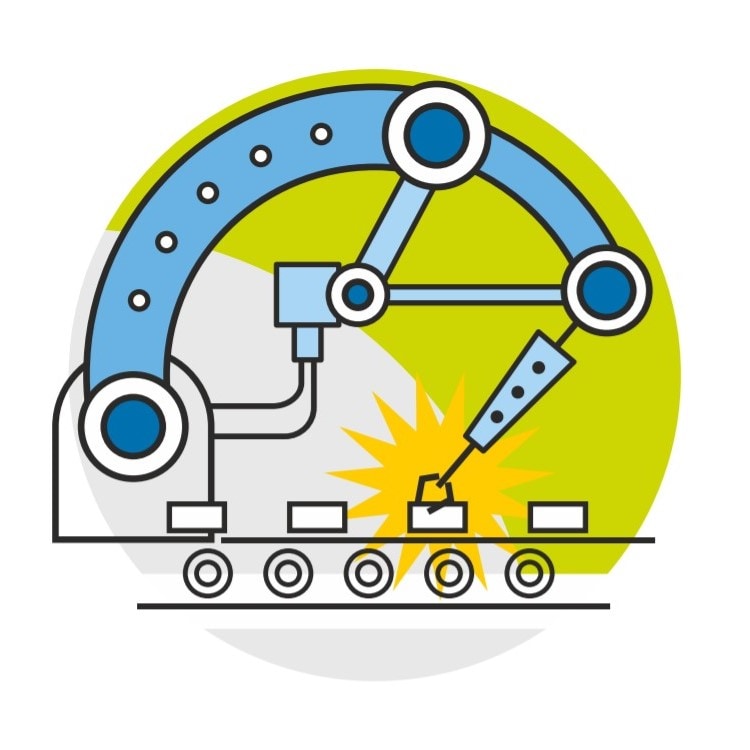Article

2021 Q4 Deloitte CFO Express
Issue No.4
Explore Content
- Play this episode
- Regional growth divergence in Asia Pacific
- The Greater Bay Area under the new development paradigm - Strategic Initiatives in the 14th Five-Year Plan period
- China’s turning point: decarbonisation is a new economic engine
- Manufacturing + AI innovative application development Report
- Q1-Q3 2021 Mainland & HK IPO Markets Review & Outlook
- China's Life Science and Healthcare Industry M&A Market in 2021
- Global Tax Reset II Series
- Zero Trust: new approach to address cybersecurity
- Hiring on all cylinders: What companies want from a post-pandemic CFO
As the end of 2021 approaches and we reflect on its first three quarters, the Chinese economy is showing clear signs of a slowdown, with Q4 growth likely a tad lower than Q3's 4.9%. However, the Chinese authorities have shown that they have the financial resources and policy tools to contain the risks to the economy. With COVID-19 outbreaks coming under control, authorities are shifting to more calibrated measures to minimize the pandemic's economic impact and restore consumer spending and services output. Disruptions to global supply chain hit by restrictions and lockdowns have led to rising energy prices, and the Chinese government is accelerating coal production to respond to the damage wrought by power shortages.
From this issue onwards, we have added the Chief Economist's View section to include periodical updates and analyses of macroeconomic issues from Deloitte Research team. This issue of CFO Express features Deloitte's interpretation of the strategic initiatives in the 14th Five-Year Plan period, and includes reviews and outlook of several industries and markets, including Manufacturing + AI applications, Life Sciences & Healthcare M&A, and Chinese Mainland & HK IPOs. We also include discussions on Zero Trust security architecture and the latest developments in the OECD’s Two-Pillar tax reform. We hope finance executives and their colleagues find these excerpts instructive.
Chief Economist’s View |
|
Trends and Outlook |
|
Expertise and Practice |
|
Talent and development |
 Chief Economist’s View
Chief Economist’s View
From this issue onwards, we will add the Chief Economist's View section to include periodical updates and analyses of macroeconomic issues.
Regional growth divergence in Asia Pacific
Deloitte Chief Economist, Sitao Xu, shares his insights and analysis of the economic outlook for Asia and what’s hot on the economic agenda. His main takeaways:
- Although Asia Pacific is experiencing headwinds, including the emergence of COVID-19 variants, supply chain risks, rising energy prices, and power shortages in China, Deloitte is optimistic about economic prospects given the acceleration of vaccine roll-outs, people’s enhanced resistance, and more calibrated pandemic containment.
- The trajectories of each individual economy will diverge, depending on their level of state capacity, sensitivity to external factors, and authorities’ willingness to undertake longer-term reforms.
- The slowdown in the Chinese economy in the third quarter presents downside risks to growth, but these can be contained by a modest degree of domestic fiscal and monetary policy easing.
 Trends & Outlook
Trends & Outlook
The Greater Bay Area under the new development paradigm – strategic initiatives in the 14th Five-Year Plan period
The Guangdong-Hong Kong-Macao Greater Bay Area ("GBA") has a key strategic role in the 14th Five-Year period. Based on the positioning of the GBA, Deloitte suggests development plans should revolve around building an international innovation hub to strengthen the region's role as a platform for national strategic science and technology development; becoming a benchmark for green transformation to empower high-quality development; exploring and trialling supply chain coordination models that can serve as leading initiatives for regional integrated development; and building a platform for high-level opening up to promote the integration of Hong Kong and Macau into China’s national development.
Improving the innovation ecosystem
The GBA has gathered the bulk of China’s technology innovation resources, including leading innovative companies, high-tech talent, sound scientific research foundations, and a leading innovation environment. The next step should be to leverage Hong Kong's regional advantages to elevate the region’s international influence through international technology cooperation; support high value-added industrial development, cultivate high tech industries including next generation IT, biopharma, new materials, and NEVs; and lead key technology breakthroughs through original innovation and fundamental research.
Exploring green transformation
Deloitte believes that the core of green transformation is to continue promoting the evolution of four major regional infrastructure themes: production and consumption of clean energy, deepening transport electrification, the digital transformation of green construction, and a green revolution in high-energy consuming segments of ICT. As a next step, we recommend establishing a designated GBA committee for green development to coordinate related goals for the 11 cities in the GBA, aligning governance mechanisms and carbon emission targets, standardizing carbon emission control systems, and developing a green financial market.
Developing supply chain coordination
The disconnection in logistics and trade management systems across various parts of the GBA (including Guangdong, Hong Kong, and Macau), and inadequate digital transformation of infrastructure are challenging regional logistics connectivity. GBA authorities should design a standardized management system according to international norms that accelerates logistics hub and intelligent logistics platform construction, and encourage the construction of a closed-loop logistics supply-chain ecosystem with AI and IoT as core technologies.
Leading high-standard opening-up
As it opens up, the GBA is leveraging major cooperative platforms, such as Hengqin and Qianhai, and accumulating experience of opening-up through institutional innovation experiments on these two platforms. The Regional Comprehensive Economic Partnership Agreement (“RCEP”) signed in 2020 officially take effect in January 2021, and will promote trade and investment between the GBA and Southeast Asian countries to raise the level of opening-up. The GBA will push ahead with financial reform to deepen regional integration among the Chinese Mainland, Hong Kong, and Macau, further explore the cross-boundary Wealth Management Connect Scheme, and optimize and improve the connectivity of financial market infrastructure, including Shanghai-Hong Kong Stock Connect, Shenzhen-Hong Kong Stock Connect, and Bond Connect.
China’s turning point: decarbonisation is a new economic engine
China has pledged to reach peak emissions by 2030 and carbon neutrality by 2060. What seems like the cost of climate change today is an investment in a climate-driven transformation towards a more secure future.
Deloitte has developed a unique D.CLIMATE model that reflects the impacts of physical climate change in a baseline economic trajectory. The framework reveals the tremendous economic harms of inaction or inadequate action (an estimated economic loss to China of RMB180 trillion), and the immense opportunities that present themselves in transforming China’s economy. Rapid decarbonisation could yield economic gains of approximately RMB116 trillion (in present value terms) for China’s economy by 2070 and would bring an additional 2 percent of GDP growth compared to climate change inaction.
Manufacturing + AI innovative application development report
AI technology can help manufacturing companies enhance productivity and product competitiveness, and create new ecosystems and organization structures. With the world’s largest manufacturing sector, China has ample scenarios for the application of AI. It is estimated that China's AI in manufacturing market has grown at 40% each year since 2019, and is expected to exceed RMB14 billion by 2025.
Our main findings on the AI in manufacturing market are:
Base market: China's AI chips market will maintain annual average growth of 40%-50% in the next few years. The GPU and FPGA markets are monopolized by foreign players, with the exception of ASIC, so will become a focal point of competition.
Technological platforms: Computer vision, machine learning, and AI cloud deployment will drive growth of the AI in manufacturing application market. The application market for computer vision and machine learning are estimated to reach RMB5.5 billion and RMB4.4 billion, respectively, by 2025, with AI cloud deployment to hit RMB6 billion.
Industrial application: The telecommunication/semiconductor, automotive, and the energy & electric power industries are set to take the lead in industrial application market size and growth. It is estimated that by 2025, the industrial application market will reach RMB4.1 billion for telecommunication/semiconductor, RMB 3.7 billion for automotive, and RMB2.5 billion for energy & electric power.
In application scenarios, predictive maintenance could become the next “killer application”. New manufacturing models such as flexible production and collaborative manufacturing will also promote the growth of applications for advanced planning and scheduling.
AI manufacturing applications face challenges including chip technology constraints, a lack of scalability, and barriers in corporate governance and access to talent. Deloitte believes government and civil society should work together to enhance talent training, digital transformation, technology integration, and key technology R&D to promote AI applications.
 Expertise & Practice
Expertise & Practice
Q1-Q3 2021 Chinese Mainland & HK IPO Markets Review & Outlook
The Chinese new listing market performed steadily in Q3 2021 and outperformed the same period of 2020. As a result of various reforms and regulators' effort to maintain a healthy capital market, there were more IPOs across all markets except the Main Board in Shenzhen, and growth in proceeds except for the SSE STAR Market in Q3 2021. By industry, the proportion of manufacturing sector IPOs increased as well. With continuous growth in the number of new listings and IPO funds on the SSE STAR Market and ChiNext, Deloitte China's Capital Market Services Group predicts that most IPOs in 2021 will have come from these markets. At the same time, small and medium-sized manufacturing and technology businesses will continue to drive IPO volume.
Although the Hong Kong market's performance has been slow in Q3, Deloitte is delighted to see weighted voting rights structures become so well received in Hong Kong by investors in such a short period of time since the WVR regime was introduced, with deal volume and value having risen from last year's level. This demonstrates the advantages of Hong Kong's ecosystem for technology and innovative companies and connectivity with the Mainland in capital markets and regulation. The Capital Market Services Group predicts that so long as there are no substantial changes to regulatory measures, the Hong Kong IPO market is well set to meet its forecast by the end of December 2021, thanks to a long, and strong, pipeline of nearly 200 IPO applicants as of end-September, including primary dual listings and listings from new economy businesses.
China's Life Sciences & Healthcare Industry M&A Market in 2021
2020 was a vibrant year for M&A transactions in China's LSHC industry. Excluding mega transactions with a value of more than USD 1 billion each, deal value rose 45.2% from the previous year. With its fast recovery from the pandemic, China has attracted many global funds to be injected into its LSHC market, particularly biopharma and biotech. Additionally, there were many cross-border licensing deals in 2020, especially for out-licensing, where deal volume rose to 23 from just three in 2019. PE/VC and IPO financings edged up, led by drugs, where deal value was up 25.5%, and medical devices, where deal value soared by 42.5%.
We expect continued growth in China's LSHC M&A market, driven by ongoing trends in innovation development and the digitalization of healthcare services and distribution channels, including:
- Unmet needs in disease prevention and iHealth services resulting from the epidemic leading to a growing emphasis on preventative healthcare measures and medicines
- The infusion of digitalization and innovation into life sciences continuing to drive growth in fundraising value
- China having the infrastructure and resources to encourage innovation and mid-to-high-end manufacturing that will promote localization of medical device production
- CXO companies in China benefitting from strong domestic demand for innovative drug development as Chinese pharmaceutical companies increasingly look away from generics towards innovation
- More large public hospitals going through regional consolidation via partnership or acquisition
- Along with development of "Internet+" and mobile healthcare, telemedicine becoming widely used in senior care and chronic disease management in the post-pandemic era.
Global Tax Reset II Series – Updates on OECD Inclusive Framework
On 8 October 2021, the G20/OECD Inclusive Framework on BEPS (“Inclusive Framework”) published a statement on the components of global tax reform agreed by 136 of its members. The update clarifies some of the remaining questions from the agreements reached in July and shows developments in negotiations that have allowed Ireland, Hungary, and Estonia to sign up to the agreement.
The negotiations led to an agreement that no new digital sales taxes (“DSTs)) will be introduced (unless Pillar One’s Amount A fails to be implemented by the end of 2023). This is important, as several countries had said they intended to look at unilateral measures. The updated statement also includes an implementation plan that reflects commitment to the ambitious and challenging objective of implementation in 2023. Implementation of the undertaxed payment rule will be deferred by one year to 2024, allowing time for countries to enable the income inclusion rule to take effect in domestic regimes before the backstop is invoked.
The most important remaining political challenge is US domestic approval of the rules, in particular those related to Amount A. The OECD estimates that under Pillar One, taxing rights on more than USD125 billion of profit will be reallocated to market countries every year. The global minimum corporate income tax under Pillar Two is estimated to generate around USD150 billion in additional global tax revenues. Although some technical details are yet to be confirmed, the impact on businesses is clear. Deloitte is advising clients to follow up on the latest progress and implementation timeline, and begin their self-evaluation and preparation early.
Zero Trust: new approach to address cybersecurity
As companies experience changes in business models, including migrating applications from data centres to the public cloud, endpoints expanding to include mobile devices, and the proliferation of web-enabled smart devices, the boundaries of IT infrastructures have grown blurry and the technology ecosystem can be all encompassing. The familiar “trust, but verify” doctrine is being supplanted by “never trust, always verify”. According to an IBM report on data breaches published in 2021, the average cost of a data breach has reached USD4.24million, and USD4.96 million where there are higher levels of remote work.
The Zero Trust approach deploys network level security controls to only expose the applications a user needs, preventing anybody from exploring any parts of a network to which they don't need access. The COVID-19 pandemic has accelerated companies' journey to Zero Trust adoption as more of their personnel work remotely.
Adopting Zero Trust does not mean an organization has to replace its existing infrastructure. Below is a summary of issues for CFOs to consider in their organizations’ Zero Trust transformations:
- To be effective, Zero Trust requires strong, centralized identity and access management across all applications and data locations. CFOs can start by enhancing identity and access management capabilities, for example with identity controls like single sign-on.
- The Zero Trust technology market is fragmented with no one-stop vendor, so CFOs can consider leveraging or extending existing security investments to create harmonized sets of security controls that support integration across technology ecosystems.
- Spend time and gain consensus with various stakeholders, including security, IT, application owners, and end users, to drive successful transformations without disrupting operations or negatively affecting user experience.
 Talent & Development
Talent & Development
Hiring on all cylinders: What companies want from a post-pandemic CFO
With a roaring SPAC IPO market, the CFO role expanding post pandemic, and increased CFO turnover at Fortune 500 and S&P 500 companies, competition to fill CFO seats has moved into a higher gear. We interviewed three executive search recruiters to share their views on the CFO job market. Below is a summary of the qualities and skills companies are looking for in their post-pandemic CFO:
- A co-leader who supports expansion plans: dealmakers expect M&A activity to return to pre-COVID levels in 2021, so CFOs need to be familiar with the transaction process to facilitate inorganic growth. Experience of public offerings (IPO and secondary) or international expansions remain in high demand.
- A transformer who manages shifts in workplace trends post pandemic: the pandemic accelerated workplace trends like virtualization, flexible work arrangements, and the integration of new automation tools. Growth-oriented companies want to make sure the CFO they hire can think through options for different business models and deliver timely insights to support decision-making.
- A compassionate leader with commitment to diversity, equity, and inclusion (DEI): the pandemic has given rise to social and racial issues. CFOs need to display empathy and openness, and come up with a systematic DEI approach, which increasingly becomes a priority strategy.
Contact us
If you need any further information, please feel free to reach out to your Deloitte contact person, or reach out to us via the following contact details.
Norman Sze
Vice Chair
Deloitte China
Phone: +86 10 8512 5888
Email: normansze@deloitte.com.cn
Maggie Yang
Partner
Finance & Performance
Deloitte Consulting
Phone: +86 10 8520 7822
Email: megyang@deloitte.com.cn
Bo Sun
Senior Manager
The CXO Program
Deloitte China
Phone: +86 10 8512 4866
Email: bsun@deloitte.com.cn
Explore Content
- Play this episode
- Regional growth divergence in Asia Pacific
- The Greater Bay Area under the new development paradigm - Strategic Initiatives in the 14th Five-Year Plan period
- China’s turning point: decarbonisation is a new economic engine
- Manufacturing + AI innovative application development Report
- Q1-Q3 2021 Mainland & HK IPO Markets Review & Outlook
- China's Life Science and Healthcare Industry M&A Market in 2021
- Global Tax Reset II Series
- Zero Trust: new approach to address cybersecurity
- Hiring on all cylinders: What companies want from a post-pandemic CFO










